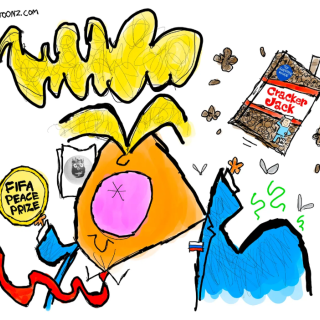Advertisement
Located in the Short North, in a renovated historical building across from Goodale Park, the Pizzuti Collection houses world renowned artwork from the collection of Rob and Ann Pizzuti. The artwork varies from underrepresented contemporary artists from around the globe to some of the biggest names in the art canon.
These artists are not afraid to speak about the politics of the world around them and Pizzuti gallery is not afraid to share their voices with Columbus. One of the walls of the gallery state “Politics and other host issues are not avoided; rather difficult, challenging and tough are adjectives that describe many of the important works in the collection.”
The Cuban Experience exhibition on the main floor displays a spectacular assortment of the various Cuban voices and political points of view. Teresita Fernandez’s piece “Stacked Smoke” is a wall of frosted plexiglass blocks stacked six feet by six feet. Images of clouds or billowing smoke are printed in browns and light blue. At first the piece gives a sense of both beauty and dreamy view of a digital blocked sky. It is clean and stacked in a minimalist style. That mood changes upon closer viewing. The colors of the clouds begin to imply pollution and filth. The plexiglass blocks become a veil to hide the destruction of the environment.
Many of the pieces on view are raising awareness of the corruption in politics, globalization, economic disparity and war. Although not necessarily implying solutions, they seek to explore the anxieties and questions of the artists. One room is particularly focused on war. Artists Adonis Flores and Reynier Leyca Nova are curated together with pieces on war and propaganda. Flores’s two large scale photos of soldiers titled “Lenguaje” and “Vision.” In one photo, a soldier in fatigues sticks out his camouflage painted tongue. In the other, another soldier holds toilet paper rolls to his eyes. Nova displays four to-scale size glass revolvers and four glass machetes sculptures. Here we see eight powerful weapons of violence and war made of fragile glass.
The permanent collection on the second floor houses work by the heavy hitters of the art world such as Jean Dubuffet, Louise Nevelson, Donald Judd, Richard Tuttle, Gerhard Richter, Frank Stella and Susan Rothenberg. These artists are important voices in the evolution of contemporary art over the last 40 years.
The second floor also presents the important work of Chinese political artist Ai Weiwei. His piece “Moon Cabinet # 5” stands a towering 12 feet tall in the large gallery. The hollow cabinet is made of China’s heavy native Huanghuali wood and holds nothing. Two 16 inch holes are placed on the front and the back of the façade. As you stand before it, one hole sits at eye level and shows the bright, white gallery wall behind the cabinet. The other hole is placed much higher, showing the dark shadows within the cabinet. These holes suggest the stages of the moon. A full moon before us and a new moon looming above. It shares the idea of new beginning and full endings of a moon cycle creating change. The large cabinet might also be inferring the moon being held captive in the decadence of a man-made display case. Since moon is really just implied, Ai Weiwei might be sharing the idea that the cycle of transformation (revolution?) cannot be held captive in a cabinet, but is held within us as we look.
It is rare to see such a collection that holds so many underrepresented women, as well as international artists. Columbus is fortunate to have such a collection of important voices shouting out the disparities and the wonders of the world around us. The collection is on view until June.



